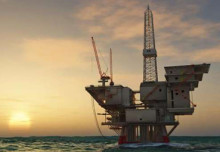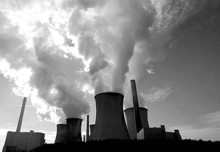Natural gas is a major source of energy and accounts for about a quarter of energy consumption the United States. It is a colorless and odorless gas, whose combustion produces large amounts of energy. This Flammable gas is a mixture of different gaseous fossil fuels, which is composed mainly of methane, but which also includes significant quantities of ethane, butane, propane, carbon dioxide, nitrogen, helium and hydrogen sulfide.
Natural gas is located under the earth’s crust in the oil fields and natural gas fields in the carboniferous strata. Such as oil and coal is a fossil fuel, consisting of residues of organisms that lived millions of years ago. However, compared to other fossil fuels, natural gas is much less polluting because its combustion gives off lower greenhouse gas emissions.
Once extracted, natural gas can be liquefied or compressed to be transported. The liquefied natural gas (LNG) is an increasingly important component of the supply of natural gas in the world because it is less expensive to transport over long distances in regions where there are no pipelines. The compressed natural gas (CNG), however, has lower costs of production and storage as it does not require the expensive cooling processes and cryogenic tanks needed for LNG.
Among the major producers of natural gas there are Qatar, Norway, Tunisia, Algeria, Saudi Arabia, United Arab Emirates, Israel, Poland, Indonesia, the United States and Canada.
MAIN USES
Electric power generation
Natural gas, for its non-polluting combustion, it is increasingly used for the generation of electricity using gas turbines and steam.
Hydrogen
Hydrogen production is one of the primary uses of natural gas. Hydrogen is used as an important element in the chemical industry, as a key component in the process of refining crude oil and as fuel for hydrogen vehicles.
Residential Use
Natural gas is one of the cheapest sources of energy for residential use and versatile. Find a variety of applications in the home, including the supply of electric cookers and dryers, and heating and cooling.
Natural Gas Vehicles
Compressed natural gas is used in countries such as Argentina, Brazil, Pakistan, Italy, India and Bangladesh as a fuel for vehicles. CNG is stored in tanks and dispensed in a manner similar to conventional fuels.
THE NATURAL GAS MARKET
The futures contracts on natural gas are traded on the New York Mercantile Exchange (NYMEX). Their pricing is based on the delivery of gas to the ski Henry Hub (HH) of Louisiana – the fulcrum between 16 pipelines supplied from the gas fields in that area. Their price is the benchmark for the natural gas market in the world.
The factors that determine the dynamics of the natural gas market are:
Seasonality
The natural gas market has a purely seasonal trend. The stocks accumulated during the summer months and are consumed during the winter, when the question touches the highest levels.
Weather Conditions
The weather patterns and climatic anomalies can have a significant impact on the production and distribution of natural gas.
Plant Availability
The rigs are expensive equipment. Due to the volatility of prices in the sector, it is difficult for manufacturers and suppliers of drilling equipment to plan well in advance of the construction and placement of these facilities, so that may not be immediately available in the places in which they serve.
Availability of skilled workers
The need to train and employ skilled workers may involve a time lag between peak demand and increased production.
Prices of other fossil fuels
Because natural gas deposits are often associated with those of coal and oil, the increase of the extraction of these other fossil fuels may reflect an increase in inventories of natural gas. This increase in supply could have an impact on prices.





 English
English Italiano
Italiano